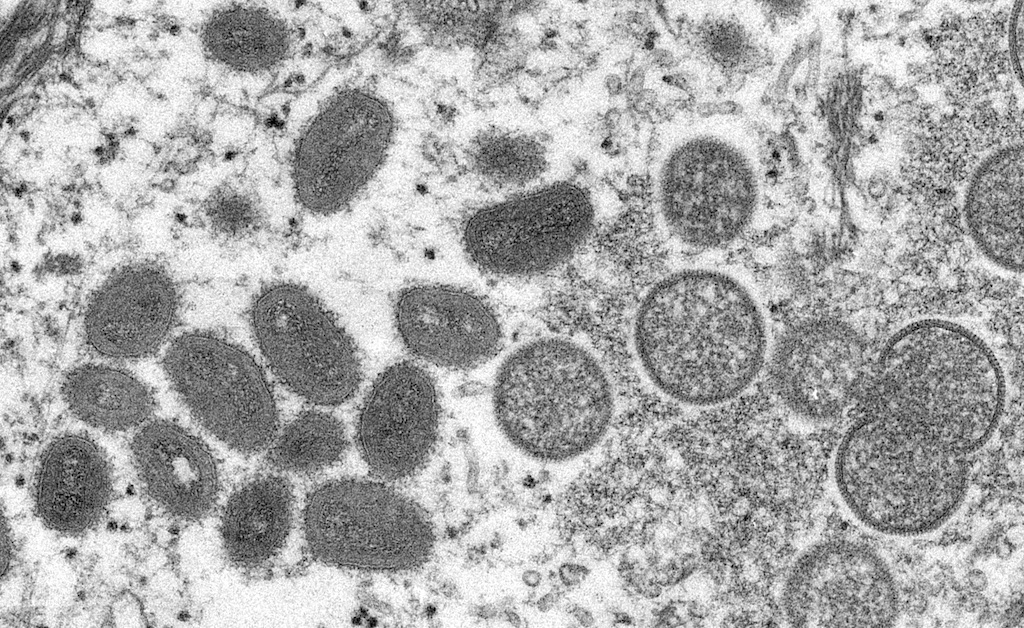WASHINGTON – New monkeypox cases are continuing to decline in Maryland and the District of Columbia.
However, newly released data from the Maryland Department of Health shows that Monkeypox cases in Maryland are disproportionately affecting Black communities, mirroring national demographic data as health officials grapple with how to slow the spread.
Most cases of the viral disease are affecting gay men, bisexual men and men who have sex with other men. Individuals of any gender or sexual orientation can contract monkeypox through close personal contact, according to the Centers for Disease Control and Prevention. Black and Latino individuals are disproportionately affected nationally.
There are over 22,000 monkeypox cases in the United States and one person has died, according to the CDC. Infection rates have slowed over the past weeks, CDC Director Rochelle Walensky said Wednesday.
“We approach this news with cautious optimism,” Walensky told lawmakers during a Senate Health, Education, Labor and Pensions Committee hearing, emphasizing the importance of continuing federal response efforts.
In Washington, new cases have declined by an average of 22% every week since peaking on July 17, according to D.C. Health. Peter DeMartino, director of the Maryland Infectious Disease and Health Services Bureau, said that Maryland’s new cases peaked in early August and have continued to decline since then.
District, Maryland and Virginia health officials held nightly meetings to coordinate responses and ensure the validity of their case numbers, given the large number of people who move between these jurisdictions regularly.
In spite of the coordination, the approaches from health officials in the District and Maryland took different forms.
According to the District’s State Epidemiologist Anil Mangla, the city’s response was successful because infrastructure was already in place before the first case was detected. The Department of Health had secured vaccines, set up a vaccination registration system and guided the response through behavioral surveys that helped to identify those most at risk of infection.
Maryland’s approach to the monkeypox outbreak was more community-guided. DeMartino said that the state looked to community organizations in at-risk communities to guide messaging, testing, and vaccine rollout.
Based on the feedback of at-risk community members, Maryland health officials are not referring to the disease as monkeypox, but instead use the less stigmatizing “MPX.”
Initially, Maryland also faced the challenge of having far fewer vaccine doses available than neighboring Washington, which was able to administer an average of nearly 1000 per day early in the outbreak. At the beginning of the outbreak, Maryland only had 600 doses available for the whole state.
In Washington, the number of confirmed cases is equal for white and Black residents, but in Maryland, significant disparities exist. According to the Maryland Department of Health, of 571 total cases, 57.6% were Black while 16.3% were white.
Anthony Fauci, director of the National Institute of Allergy and Infectious Diseases, compared the current outbreak to the first cases of the HIV/AIDS pandemic in his testimony before the Senate Health, Education, Labor and Pensions Committee Wednesday.
“Lessons learned during the response to AIDS and COVID-19, such as avoiding stigma and ensuring that the medical countermeasures get to where they are needed most, should help us in our efforts to respond to the ongoing monkeypox emergency,” Fauci told lawmakers.
Walensky, who testified alongside Fauci and other experts, emphasized testing, vaccinations, education and outreach to vulnerable communities as key aspects of the federal government’s response to monkeypox.
The CDC announced a new plan Thursday to allow health departments and organizations nationwide to submit requests to obtain monkeypox vaccines. The program is designed to remove barriers to vaccinations, including accessibility, mistrust and stigma.
DeMartino said the decrease in Maryland’s case numbers is due to vaccines. He also credits educating people about which communities are at higher risk and what behaviors increase chances of exposure.
“It’s not going to keep me off the dance floor,” said DeMartino, “but I might be wearing long sleeves.”

